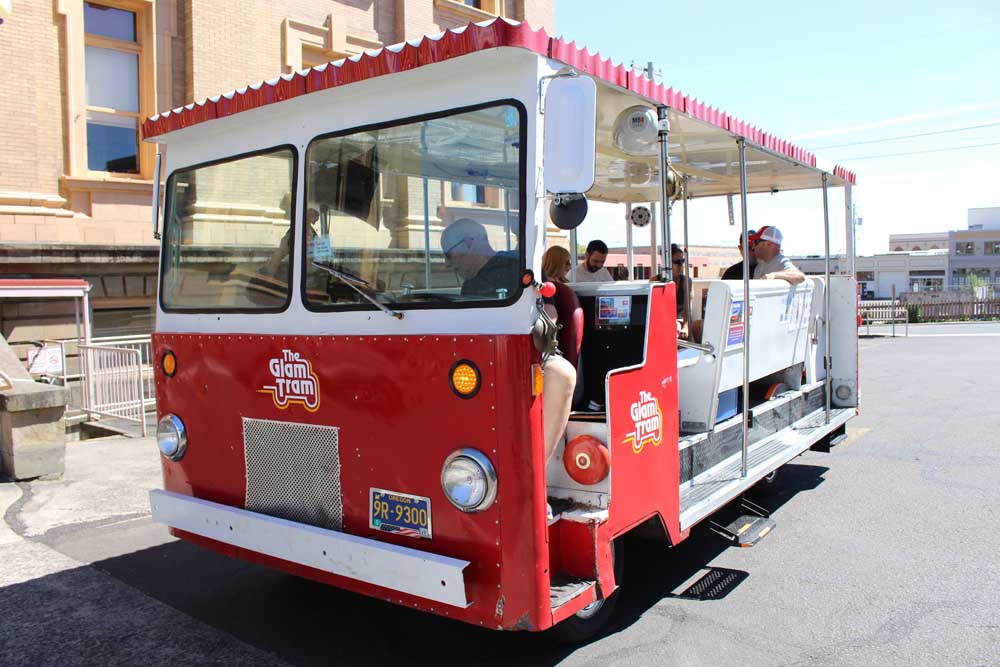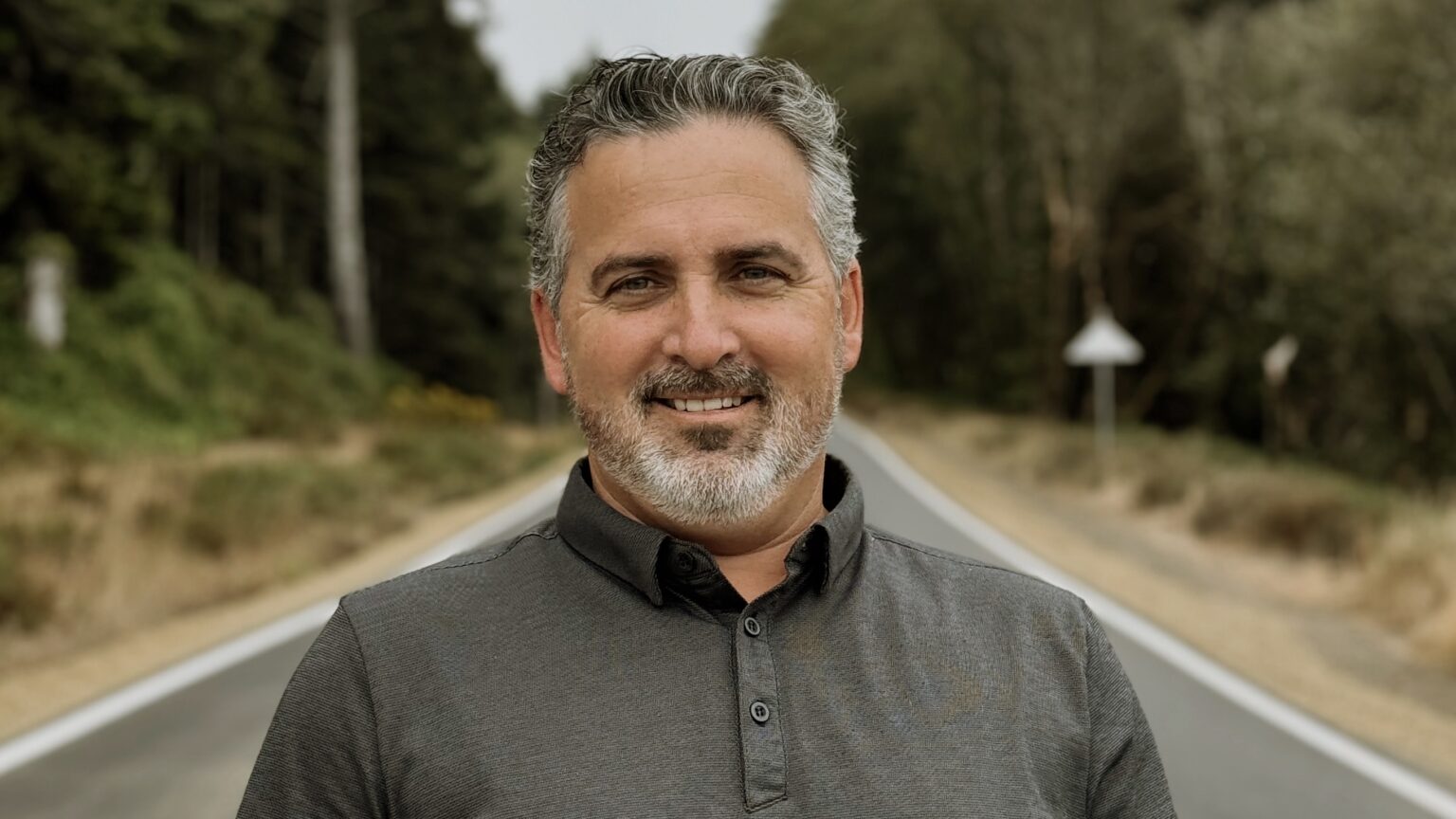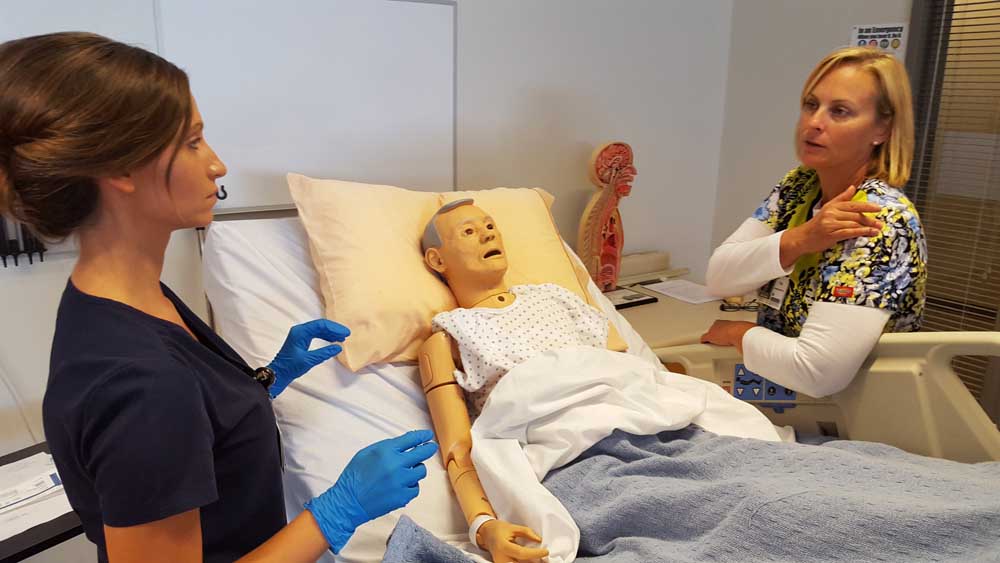‘Goonies’ artist shares original drawings
Published 5:45 am Tuesday, June 7, 2016

- Passengers climb aboard The Glam Tram for a guided tour of in-town locations where famous movies — including “The Goonies,” “Short Circuit,” “Kindergarten Cop,” “Free Willy” and “The Ring Two” — were shot. Jeff Daly, the owner and operator, co-hosted the tour with Ray Merritt, a board member of the Astoria Downtown Historic District Association.
Remember the Fratellis’ restaurant in “The Goonies” and those treacherous underground caverns beneath it? One-Eyed Willy’s pirate ship? The pipe organ made of bones?
Before these set pieces were featured in iconic movie moments, they were a pile of crude sketches and diagrams — the work of illustrators banging out ideas for a production designer.
One Goonies illustrator, Jack Johnson, visited the North Coast over the weekend for “Shot in Astoria,” a three-day celebration of the movies filmed in the city.
Events included a treasure hunt and trivia game, a tour of Ecola State Park with the man who served as park ranger when “The Goonies” crew filmed there, and, courtesy of The Glam Tram, a guided tour of in-town locations where scenes from various flicks — from “Kindergarten Cop” and “Free Willy to “Short Circuit” and “The Ring Two” — were committed to celluloid.
Johnson gave two presentations — first at KOA Campgrounds then at the Astor Street Opry Company — showing the highlights of his 26-year film career. He opened both with his conceptual brainstorms from “The Goonies,” the cult classic that put Astoria on the map for movie lovers worldwide.
On display were his original production drawings, which Johnson learned were valuable a mere two years ago when one of his sons enlightened him on the big deal Goonies had become, compelling Johnson to dig the artwork out of the garage.
Last year, Johnson came to Astoria for the Goonies 30th anniversary celebration and was amazed by the film’s popularity.
“I could not imagine that people came all the way to Astoria just for these anniversary functions,” he said. “I was used to the Trekkies running around in their costumes, but this was the same.”
“It was really an eye-opener,” he added. “And I was so happy about it, had such a good time, did good sales, that I thought I’d come up this year, even though it’s an off year.”
A graduate of Art Center College in Los Angeles, Johnson spent 12 years as an advertising art director before migrating to the film industry, where he became a production illustrator, conceptual artist and art director for feature films.
He discovered that art in advertising and film demand the same mindset: “It isn’t just the fun of art,” he said, “it’s the idea of solving major problems.”
Illustrators help the director “see” the film they’re about to direct — what to shoot and how to shoot it — while giving producers an idea of how much the film will cost and how long it’ll take to produce.
“The amazing thing is how many directors don’t have, really, a visual idea of this picture they’re going to direct,” he said.
But many do, and Johnson has drawn for filmmakers who are renowned visual artists in their own right, including Tim Burton.
“He’s probably the best I have ever worked with,” Johnson said. “He loves artists, because he was one himself.”
On “Edward Scissorhands,” a film about a young man built by an inventor who dies before completing him, Johnson drew the stages of Edward’s development. He was also involved in designing the famous topiaries that the character sculpts with his scissor-hands.
And on Burton’s later film “Big Fish,” Johnson stepped up as art director, designing and overseeing the creation of Spectre, a small town the protagonist stumbles upon.
With dozens of titles to his credit, Johnson has worked on films that became critical and commercial successes, like “The Color Purple,” “Pleasantville” and “The Perfect Storm.” Other films, like “Toys,” “Congo” and “The Shadow” didn’t fare so well.
But both good and bad films require world-class artists, like Johnson, to crank out pages of detailed, well-researched, imaginative illustrations, many of which stand on their own as stunning specimens of art and design.
“Jurassic Park III,” for example, may not be a masterpiece, but the ginormous pterodactyl cage — for which Johnson doodled some concept art — is inarguably awesome. And despite the negative reviews “Toys” received, Johnson called the film “probably the best movie I worked on as far as imagination and really having fun.”
Johnson retired in 2003. By then, the technology in his department had shifted decisively away from hand-drawings. “I was getting out just in time, relatively, because everything was being done on a computer,” he said.
Though he could sketch his designs by hand faster than someone using a computer, “the problem was when the director came along and he wanted to see it from a different angle,” he said. “The guy on the computer just turned a wheel, and there it was. I had to start over.
“So, unless I was going to decide to join the crowd and sit at a computer all day, it was time for me to go,” he added.
Outside of his film work, Johnson’s paintings have won awards in regional and national shows, including the National Watercolor Society and the American Watercolor Society. He organizes a yearly art competition for sixth through 12th graders in the Paso Robles area, near his ranch on the central California coast.
Using his presentation as a rough outline, Johnson hopes to write a book on his career in film — though he may have trouble acquiring the rights to reproduce the artwork owned by movie studios.
Johnson doesn’t glorify the film industry; it is often rife with disappointment. Films may get changed, cut down or called off altogether, wasting the energy that the illustrator poured into his projects.
In fact, Johnson estimates that roughly 20 percent of the films he worked on got canceled after he and his co-illustrators finished the initial sketches and paintings, and made it abundantly clear that the budget would not cover the costs.
“One out of five times, I’d get all worked up, get some good ideas and then have to go on to something else,” he said.
He doesn’t miss Hollywood. But “it can be a wonderful place that, in my case, paid me very well to do what I enjoy doing,” he said. “I consider myself exceedingly lucky.”









